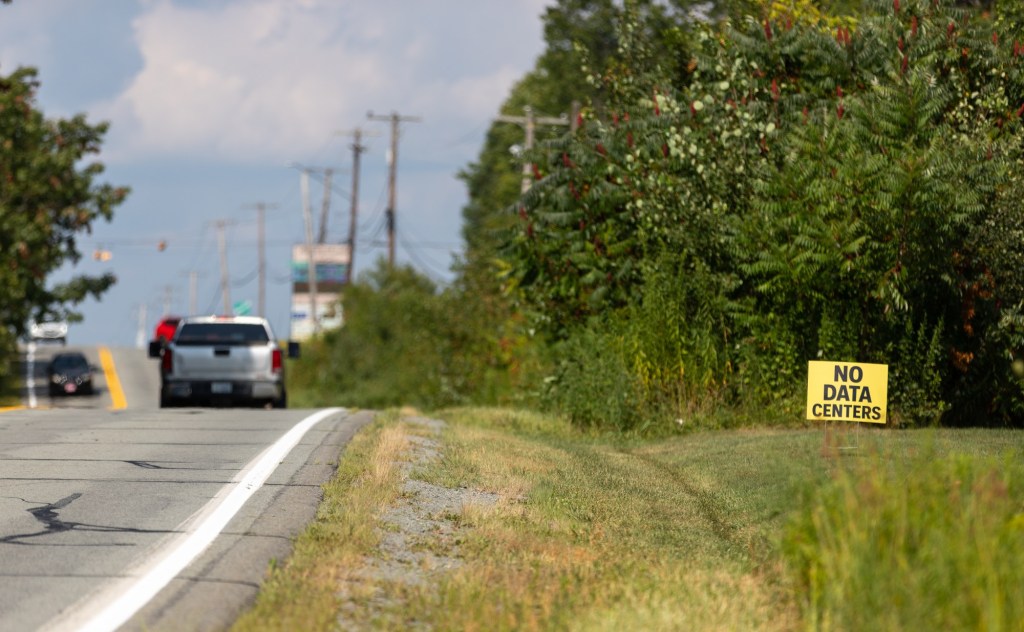While watching the deluge of data center proposals in the Midvalley, Moosic is working to update its zoning to address the industry spreading through Northeast Pennsylvania.
Borough council voted in September to begin the process of amending its zoning to regulate data centers and dictate where they can be built. Data centers have dominated politics in the Midvalley throughout 2025 as developers eye the area for campuses, including proposing some near residential areas.
While Lackawanna County communities have navigated controversial warehousing, power plant and landfill developments in the past decade, no communities were prepared for data centers when they started receiving zoning applications this year. Pennsylvania requires municipalities to allow for every type of lawful land use within their borders, but ordinances that regulate zoning can be decades old, leaving towns scrambling to update their legislation in response to the new industry. Prior to the influx of data center requests, no municipality in Lackawanna County adequately addressed them.
There are at least six proposed data center developments in Lackawanna County, with three in Archbald, two in Jessup and one in Clifton and Covington townships along Interstate 380.
A developer sought zoning relief in August to build data centers on residential land in Blakely, but those plans were withdrawn amid community opposition.
So far, Jessup, Clifton and Covington townships have adopted ordinances regulating data centers. Archbald considered a data center zoning ordinance during a special meeting Oct. 3, but a motion to adopt the ordinance died when no member of council seconded it following pushback from the community to add restrictions and reduce the number of locations where the town would allow the facilities. Residents have since petitioned the borough to amend and reconsider the proposed zoning with even more safeguards and fewer areas to build them.
Other towns working on data center legislation include Blakely and Olyphant.
Despite not yet having been approached by data centers, Moosic wanted to be proactive after seeing both Amazon’s announcement in June to invest at least $20 billion to build data centers in Pennsylvania and the spread of proposals in the Midvalley, council President Marilyn French said. Moosic’s zoning ordinance, which was adopted in 2003, does not have anything regulating data centers, she said.
“We have to welcome them, but we can decide as a municipality where it makes the most sense for them to operate if one were to approach us,” she said. “We didn’t want to wait and react to it. We wanted to be proactive and get something moving.”
The ordinance will also address solar farms, which are missing from the borough’s zoning ordinance, she said.
One of the most common concerns locally is the proximity of data centers to residential areas, with a push in the Midvalley to restrict data centers to land across the Casey Highway.
Moosic is still too early in the process to determine exactly how it will regulate data centers, French said. Her biggest concerns pertain to noise and the environment, including how data centers would impact the power grid and water consumption.
“We’re in our own phases of researching what the environmental impacts are and how those are being managed,” French said. “I am concerned, and I want to know more before we make a decision.”
The most common strategy to regulate data centers in Lackawanna County is making them conditional uses.
Conditional uses require data center developers to testify in front of borough officials and the community at public hearings. Data centers must adhere to conditions imposed by the town in order to receive approval from council. Those conditions can include prerequisite noise, water and environmental impact studies, proof from utility companies that they have the capacity to serve data centers, and restrictions on how close they can be to residential areas with mandatory buffers.
Moosic officials initially looked at putting data centers in manufacturing zones, but the borough’s zoning map hasn’t been updated since 2003, French said.
The borough is working on a strategic management plan through the state Department of Community and Economic Development, which French expects to finish over the next month. The borough then wants to create a comprehensive plan that it would use to update its zoning. Because that process takes time, officials didn’t want to wait to start thinking about data centers and where they would be appropriate, she said.
Officials will meet with a planner to start the conversation on data centers and bring in experts to review the area, she said.
Moosic’s population is growing, which French attributes to the quality of life in town.
“When it comes to development, of course we welcome development. We want businesses to operate here,” she said. “That’s great for our local economy, but we also want to be considerate of our residents and what makes the most sense to keep the quality of life great in Moosic.”
With the Midvalley being “the tip of the spear” with data centers, it gave Moosic some time to act accordingly, said Mayor Bob Bennie, who stressed that it is “critical for us to be proactive.”
“We need to make sure that we protect the residents of Moosic borough and the resources of Moosic borough,” he said. “If any facility were to move into the borough, we have to make sure that it’s beneficial across the board to the residents and the borough at large.”
Bennie especially does not want to allow data centers anywhere close to residential areas, schools or parks. Public safety and quality of life are the main issues the borough has to be aware of when considering data center legislation, he said.
“The challenge for us, as the leadership in Moosic borough, is to make sure if there’s any inquiries, we protect the residents,” Bennie said.

